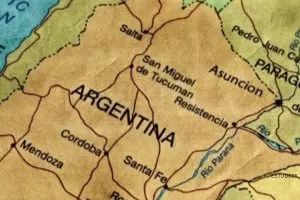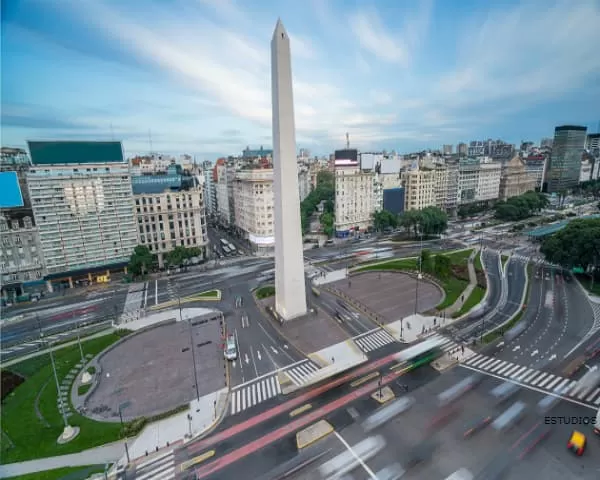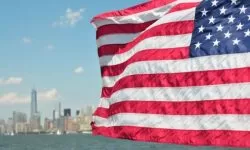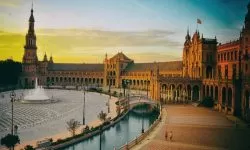Country of Argentina: Its History
Argentina is a South American country that covers most of the southern portion of the continent. Argentina, the eighth largest country in the world, occupies a larger area than Mexico and the state of Texas in the United States.
It encompasses immense plains, deserts, tundra and forests, as well as high mountains, rivers and thousands of miles of ocean coastline. Argentina also claims a portion of Antarctica, as well as several islands in the South Atlantic, including the Falkland Islands (Islas Malvinas) ruled by the British.
Argentina has played an important role in the history of the continent. After three centuries of Spanish colonization, Argentina declared its independence in 1816, and Argentine nationalists were instrumental in revolutionary movements elsewhere.
The country’s name comes from the Latin word for silver, argentum, and Argentina is, in fact, a great source of valuable minerals. More important, however, has been Argentina’s production of cattle and cereals, so it was once among the richest nations in the world.
Provinces of Argentina and Its Geography
Province of Buenos Aires, Province of Córdoba, Province of Santa Fe, Province of Entre Ríos, Province of Misiones, Province of Mendoza, Province of Chaco, Province of Tucumán, Province of Río Negro, Province of La Pampa, Province of Tierra del Fuego, Antarctica and South Atlantic Islands, Province of Jujuy, Province of Chubut, Province of Santa Cruz, Province of San Luis, Province of Corrientes, Province of Formosa, Province of Catamarca, Province of San Juan, Province of Salta, Province of Neuquén, Province of La Rioja, Province of Santiago del Estero.
Cities of Argentina
Buenos Aires, Mendoza, Mar de Plata, Salta, San Miguel de Tucumán, Rosario, Ushuaia, San Carlos de Bariloche, Ciudad de Córdoba, La Plata, Neuquén, Resistencia, Bahía Blanca, San Salvador de Jujuy, Ciudad de Corrientes, Paraná, Puerto Madryn, San Fernando del Valle de Catamarca, Río Gallegos, Viedma, Tandil, Ciudad de Santa Fe, Quilmes, San Juan, Ciudad de Santa Rosa, Concordia, Posada, Trelew, San Rafael, Comodoro Rivadavia, Río Cuarto, Puerto Iguazú, Luján, Pergamino, San Nicolás de los Arroyos, Concepción del Uruguay, San Isidro, Zárate, Villa María, Junín, Gualeguaychú, San Justo, Villa Carlos Paz, San Martín de los Andes, Morón, Olavarría, Ciudad de General Roca, Venado Tuerto, Mercedes, Rafaela, Chivilcoy.
Look for Study Scholarships of up to 100% in the Different Countries of the World.

BEST UNIVERSITIES IN CANADA
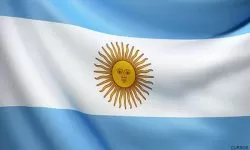
FREE STUDIES IN ARGENTINA: Courses, Diplomas, Bachelor’s Degrees, Master’s Degrees and Doctorates

WHAT IS THE BEST UNIVERSITY IN THE UNITED STATES in 2019 and 2020 ?

UNIVERSITIES THAT OFFER FULL SCHOLARSHIPS TO INTERNATIONAL STUDENTS IN USA
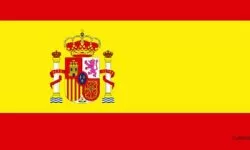
INTERNATIONAL STUDIES IN SPAIN in All Its Modalities

FREE STUDIES IN CANADA: Courses, Diplomas, Bachelor’s Degrees, Master’s Degrees and Doctorates
Buenos Aires Capital of Argentina
The City of Buenos Aires or Autonomous City of Buenos Aires, also known as Federal Capital because it is the seat of the federal government, is the capital of the Argentine Republic. It is located in the central-eastern region of the country, on the western shore of the Río de la Plata, in the middle of the Pampas plain.
The results of the 2010 census estimate the city’s population at 2,890,151 inhabitants, and that of its urban agglomerate, Greater Buenos Aires, at 12,801,364 inhabitants; being the largest urban area in the country, the second in South America, Latin America and the southern hemisphere, and one of the 20 largest cities in the world.
It is, together with São Paulo and Mexico City, one of the three Latin American cities in the alpha category, according to the GaWC study. The city of Buenos Aires is among the cities with the highest quality of life in Latin America, and its per capita income is among the three highest in the region. It is the most visited city in South America.
The surface of the City is something superior to the 200 km2 and its perimeter, 60 km. Nearly three million inhabitants reside in it distributed in neighborhoods that, from the political-administrative point of view, are grouped in fifteen communes. The population density is more than 15,000 inhabitants per square kilometre. The central and northern areas are the most densely populated territorial spaces.
The City of Buenos Aires has a mild climate all year round. With an average annual temperature of 18ºC (64°F), there are very few days of intense heat and cold, which allows you to visit the city at any time of the year.
Population Of Argentina
Argentina, with a population of 44,271,041 people, is in position 31 of the population table, composed of 196 countries and maintains a very low population density, 16 inhabitants per square kilometer.
Political Parties of Argentina
Throughout the late nineteenth and early twentieth centuries, Argentina was one of the few nations in Latin America with well-formed or well-established political parties in full operation. However, between 1930 and 1983 the armed forces were a much more powerful factor in Argentine politics than any political party.
Almost all of Argentina’s governments during this period were backed entirely by military, and almost all changes in government were due to military coups rather than competitive elections.
The two largest traditional political parties were the Partido Justicialista PJ, also called Peronista, founded in 1945 by Juan Domingo Perón, and the Unión Cívica Radical UCR or Unión Cívica Radical, founded in 1891.
New political forces and alliances are formed during each electoral cycle. Two notable examples in recent years include the Civic Coalition “CC” and the Republican Proposal “Propuesta Republicana, or PRO” both concentrated in urban centers and working to build national party structures.
Economy of Argentina
Argentina’s economy is a high-income economy, positioned as the third largest in Latin America and the second largest in South America after Brazil.
The country derives many benefits from rich natural resources, a highly literate population, an export-oriented agricultural sector and a diversified industrial base. This country’s economic performance has historically been very uneven, with high economic growth alternating with severe recessions, particularly in the late twentieth century, and poor income distribution and poverty increasing somewhat.
At the beginning of the 20th century, Argentina was known to have one of the highest levels of GDP per capita in the world and was the third largest economy in the developing world. Today, a high-income economy, Argentina maintains a relatively high quality of life and per capita GDP.
Argentina is considered an emerging market by the FTSE Global Equity Index, and is one of the main economies of the G-20.
Agricultural Sector: Argentina is one of the world’s major agricultural producers, a major producer in most of the following, exporters of beef, citrus, grapes, honey, corn, sorghum, soybeans, squash, sunflower seeds, wheat and mate. Agriculture accounted for 9% of GDP in 2010, and about a fifth of all exports.
Natural Resources: Mining and other extractive activities, such as gas and oil, are growing industries, increasing from 2% of GDP in 1980 to around 4% today. Metals and minerals extracted include borate, copper, lead, magnesium, sulphur, tungsten, uranium, zinc, silver, titanium and gold, production was boosted after 1997. Metal ore exports increased from US$ 200 million in 1996 to US$ 1.2 billion in 2004 and to over US$ 3 billion in 2010.
Industry: The manufacturing industry is the largest single sector in the nation’s economy (15% of GDP) which is well integrated into Argentine agriculture, with half of the nation’s industrial exports being agricultural in nature.
The main sectors by production value are: Food and beverage processing; motor vehicles and auto parts; refinery products, and biodiesel; chemicals and pharmaceuticals; andaluminium steel; and industrial and agricultural machinery; electronics and household appliances.
Services: it is the largest contributor to total GDP, with more than 60%. Argentina enjoys a diversified service sector, which includes social, corporate, financial, insurance, real estate, transportation, communication services and well-developed tourism.
Culture of Argentina
Asado: Argentine gastronomy is characterized by a star ingredient: meat, especially beef, to the point of becoming one of the countries in the world where more meat is consumed. All recipes are influenced by Creole, Italian and Spanish cuisines and the star dish is the parrillada, which are several pieces of grilled meat. All houses usually have their own grillers to be able to cook the meat on the grill as usual.
Dulce de leche: for some it is a dessert and others consider it a kind of brown marmalade, made of sugar and milk. It is widely used in confectionery, as a filling or as a topping for cakes. The original recipe was milk and sugar stirred and cooked until it lost its liquid appearance. For Argentines it is a food that cannot be absent that usually accompanies kitchen delicacies.
The mate: is the typical infusion made with yerba mate and hot water. It is one of the most important customs for all Argentines. Going to the home of a relative or friend and putting the kettle to fatten mates is the most normal thing in the world in this country.
It can be taken at any time, when it’s hot, when it’s cold, when you’re alone, during the night, in the morning, with strangers, while chatting… A mate is not only a simple infusion and nothing more, it is the need to share with others, to invite, to dialogue, to respect, to laugh, and so on.
Tango: it is one of the traditional Argentine dances. Unlike folklore, tango is a more urban dance that is danced in pairs. It is a sensual and passionate dance of characteristic movements that can be from soft to stronger movements. The tango is a tradition, that although at the present time it is not very listened to by the young people, we have the pleasure to know it thanks to our grandparents and parents, who are more familiar with this dance. Two of the most important tango singers were Carlos Gardel and Julio Sosa.
Football is another of the great passions of Argentines. Statistics show that nine out of ten inhabitants declare to be followers of a team. Many of its stadiums have the category of historic for sports fans and are part of the most important tourist circuits in the country. With two World Cups and 14 American Cups behind them, their selection is one of the most awarded in the world.
Tourism in Argentina
The World Economic Forum estimated that, in 2012, tourism has generated at least US$ 17 billion in direct economic turnover, on the other hand some US$ 30 billion in indirect turnover; the industry directly employed 650,000 and 1.1 million more indirectly.
Tourism from abroad contributed 5.3 billion US dollars, making it the third largest source of foreign exchange in 2004. About 5.7 million foreign visitors arrived in 2012, reflecting a doubling of visitors since 2002 despite a relative appreciation of the peso.
Sports in Argentina
Football was introduced to the public by British soldiers in the 1960s and is the nationally recognised favourite sport. Argentina’s national football teams in 1978 and 1986 were World Cup champions and runners-up in 1930 and 1990.
The national basketball team also had a great impact on the international stage by defeating the US Dream Team at the last Olympic Games in Athens and have been constant finalists in the World Basketball Cup.
Pato, a traditional Argentine sport normally practiced on horseback, was banned in the late 19th century because it became quite dangerous, but returned in the 1930s with a revised list of new rules.
Volleyball, boxing, basketball, rugby, hockey and tennis are very popular and Argentina has produced some of the best names in sports like Guillermo Vilas, which became the world of tennis in the 1970s.
Argentine drivers are also known on the race car circuit as Carlos Reutemann and Juan Manuel Fangio, who is known for being five times world champion in the 1950s.
Argentina did not perform very well at the Olympic Games, but it has won 18 gold, 24 silver and 28 bronze medals since they first joined in 1900 with just one athlete (from 2014).
Football National Teams in Argentina
Boca Juniors
Boca Juniors is the “people’s team” with more fans than any other in Argentina. Originally created by a group of Italian immigrants in the working-class neighborhood of La Boca, they are one of the few teams that have not moved over the years and are still playing there.
According to legend, Boca got its distinctive blue and gold colors after the founding players agreed to take the colors of the next ship to port. As expected, the boat had a Swedish flag and therefore blue and gold were born.
Rio de la Plata
River Plate began near La Boca but in the 1930s moved to Núñez, a middle-class neighborhood north of the city. If Boca’s style reflects the sandy reality of its surroundings, then River’s style can also reflect the beauty and elegance you’d expect from a lush, middle-class suburban neighborhood.
Carreras
The races are affectionately known as “The Academy” because of a series of Argentine internationals who come from his youth team.
The races were established in 1905 after the merger of two local clubs (Club Barrancas and Colorados Unidos). Unable to agree on a mutually acceptable name, they finally established a term they saw in a French sports magazine (Racing Club).
Independiente
Independent make up the other half of the Avellaneda Classic. In 1904 a store in Montserrat, created a team called Maipu FC. Store workers were allowed to see the team, but not play for the team. Dissatisfied with just sitting on the sidelines, the workers created their own independent team called simply “Independiente.
Currency in Argentina
The Argentine Peso is the Official Currency although the Dollar is widely Used in the Domestic Market for Trading and Financial Instruments.
Related Topics
Other Topics of Interest in ALPHAPEDIA

FREE DOCTORATE IN URBAN PLANNING

FREE CHEMISTRY COURSE

FREE BABY SWIMMING COURSE

MEANING OF ESTHER IN THE BIBLE

FREE EMBALMING COURSE

FREE MASTER DEGREE IN BANKING AND FINANCE
Pictures from Argentina
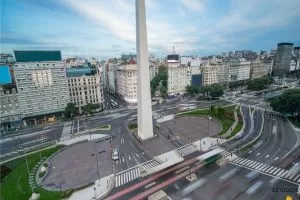
Flag of Argentina
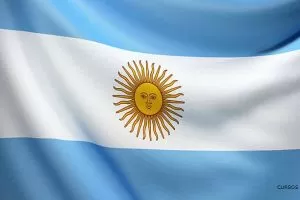
Coat of Arms of Argentina
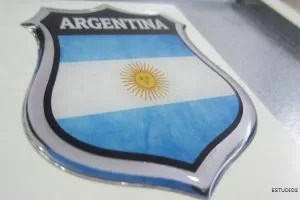
Map of Argentina
